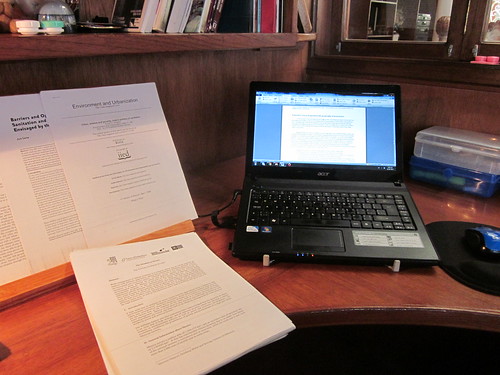Two of the questions I get asked most often not only by my own students but by other scholars on Twitter as well are: “how do I write good topic sentences?” and “how do I write good paragraphs?“. These two techniques are important for many reasons, but the one I think about the most is the topic sentence, because I believe good topic sentences often can lead to robust, well-written paragraphs.
This is one reason why I am (like Dr. Eve Ewing in a tweet I quote below), a fan of the 5 paragraph essay (a type of essay that is often taught at the college/university level). In my view, well-crafted topic sentences set the stage for coherent and robust paragraphs which then produce sound, cogent, articulate essays. While sometimes unpopular, the Intro, Body, Evidence, Discussion, Conclusions model (the 5 paragraphs essay) is replicated in scholarly writing beyond undergraduate writing (see the IMRAD model of scholarly paper). I thus concur with Dr. Eve Ewing here in that the 5 paragraph essay IS actually a smart way of introducing undergraduates to scholarly writing.
unpopular opinion: the 5-paragraph essay actually does mirror the basic principles of good essay writing (intro, evidence, conclusion; a clear sense of structure and signposting) and is a fine way to teach students the beginning stages of prose writing https://t.co/CFJhukdta6
— wikipedia “seasonal halloween name” brown (@eveewing) May 19, 2018
This paper on infrastructure privatization helps me showcase something that @jessicacalarco has talked about in earlier threads on writing abstracts and introductions. Notice where I marked *TS [ … ] this is a topic sentence, repeated from abstract in the introduction. pic.twitter.com/cuGMeFKZfc
— Dr Raul Pacheco-Vega (@raulpacheco) July 15, 2018
Unfortunately, some of the journal articles, book chapters and books I read skip the basic structure of a paragraph as described by Dr. Patrick Dunleavy in his blog post on constructing paragraphs. This is problematic because if the topic sentence is not the first one that you find in a paragraph, it is harder to discern which one is the most important and therefore, readers may find it challenging to evaluate the content to determine the most important and valuable idea within.
The usual structure of a paragraph is (and I borrow from the Dunleavy model here, though I apply my own codes):
- Topic Sentence
- Body
- Tokens (Supporting Evidence(
- Wrap (Closing)
Professor Dunleavy doesn’t agree that the Wrap sentence (what I call the Closing Sentence) should link to the next paragraph. But frankly, I do like doing this, and my writing reflects this. I believe that the Closing Sentence should allow me to follow the flow (the Throughline or Red Thread) of the entire paper.
How do I know whether a Topic Sentence is well constructed? This is a question I often get asked. One test I usually ask my students to apply is to highlight in yellow (see my colour-coded highlighting and scribbling scheme here) the first sentence of every paragraph of an entire paper or book chapter. If they are able to understand what the paper or book chapter is about through only the topic sentences, then the author chose the right ones. This method for quick reading (skimming) only works if authors follow the model where you start a new paragraph with the topic sentence.
I concur with Dr. Jessica Calarco (Indiana University – Bloomington) here where she says that a robust essay should have solid topic sentences and well-written paragraphs.
Agreed. When I assign essays to my undergrads, I give them suggested outlines. Those outlines follow the 5-paragraph model. And they help students learn to frame a clear argument and support that argument with claims (topic sentences) and evidence (examples and analysis). https://t.co/p0kzDQG3o7
— Jess Calarco (@JessicaCalarco) May 19, 2018
When I write, I try to follow the topic sentence model. For me, a key idea should be contained in one paragraph. As I searched for sources that I could link to in order to help readers discern what a good topic sentence is, I came across D’Angelo (1986)’s article, “The Topic Sentence, Revisited“.
This introduction to D'Angelo's analysis of The Topic Sentence is brilliant, as it offers a full paragraph that contains the main idea AS a topic sentence, and also synthesizes the entire paper in the first paragraph. Personally, I like this rhetorical strategy. pic.twitter.com/pXAMhyfSof
— Dr Raul Pacheco-Vega (@raulpacheco) October 25, 2018
If you read this article, D’Angelo goes back to the intellectual history of what a topic sentence and a paragraph look like. What D’Angelo and the authors he cites indicate is that a paragraph is a set of sentences that are coherent, cohesive and provide an entire idea in a self-contained unit. Therefore, a topic sentence establishes the TOPIC (or the theme, the main idea) of a paragraph.
Baby steps work really well for me. Break down the work into tiny pieces: a paragraph, say. Then break the paragraph into components: Topic sentence, example, closing sentence. Focusing on writing a tiny piece at a time and celebrating that really helps me build confidence.
— Elise Paradis (@ep_qc) September 19, 2018
The topic sentence must, therefore, ensure that if we read it (and only that particular sentence) we can have a broad, bird’s eye view of the full paragraph, even if we add supporting material and a closing sentence afterwards. A paper with good topic sentences should therefore easily be skimmed by reading only the first sentence of each paragraph. Although as I mentioned above, there are a number of academic writers who do not follow this model, unfortunately, because they feel it is formulaic. Nevertheless, I strongly believe in following strategies and formulas and THEN use slight variations and deviate from the model.
That’s why I recommend writing papers through one of two methods: (1) Answering Questions and (2) Listing Topic Sentences. These topic sentences then, as Dr. Calarco mentions in her tweet above, become full sentences. I also encourage my students and readers of this blog to consider paragraphs as their target objective. Producing enough words to finish a few sentences and form a cogent, cohesive and coherent paragraph should be a valid goal for academic writers. This belief is also why I encourage my students to write in paragraphs, one idea at a time.
I think it's important to teach process. Having a good TS should also come from seeing other's work that's easy to read and understand.
— Mr. J. Puntillo (@MrJPuntillo) August 20, 2017
Once you’ve crafted your entire paper/essay, you can then run a Reverse Outlines (Paragraph Replanning) analysis like the one posited by Dr. Rachael Caeley here. By drafting an outline and seeing how it looks like, you can see if you need to replan specific paragraphs.
A few resources:
- A blog post by Rachael Cayley (Explorations of Style) where she writes about paragraphs based on topic sentences.
- Another blog post on writing “captivating” topic sentences by the folks at SBTS Writing Center
- WikiHow’s “How to Write a Good Topic Sentence” post.
Hopefully this blog post will help people formulate better topic sentences and develop stronger, more coherent and cogent paragraphs.




0 Responses
Stay in touch with the conversation, subscribe to the RSS feed for comments on this post.